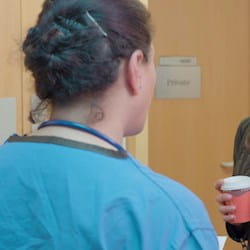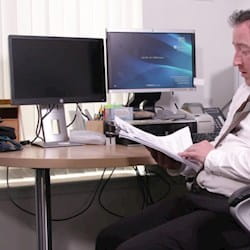MANY practices are receiving increasing numbers of calls from patients seeking appointments, putting already scarce resources under even greater pressure. One way of relieving that pressure is to implement a triage system to sort calls and decide who should be seen, and when.
While this system is generally operated by trained clinical staff, some practices choose to use non-clinical staff, which can work well but presents a number of potential risks.
Campden Health’s recent survey of 1,195 GPs, nurses and practice managers found that 28 per cent of practices triaged up to 10 per cent of patients, with nine per cent of practices triaging all their patients.
Nearly half of all providers (48 per cent) admitted they had received no training in telephone triage while 13 per cent of respondents said that receptionists without a medical background were involved – sometimes without support from a nurse or doctor.
While this didn’t appear to impact on access to clinical care (the survey found 90 per cent of triaged patients who needed an appointment received one within five days), it does represent a potential risk to patients.
It is vital that any staff member involved in this system receives specific training in the telephone triage process and that support is on hand from a nurse or doctor. A clear triage policy/guidelines should be in place and all practice staff should be familiar with it.
Most patients who phone for an appointment can be broadly categorised into three areas: emergency, urgent or routine.
All staff members involved in taking calls about appointments or access to care must have a basic level of training to recognise what constitutes an emergency i.e. acute chest pain, acute breathlessness, haemorrhaging, severe trauma or stroke. Emergency patients should be directed to the emergency department or an ambulance should be called.
Urgent patients should be seen the same day, while routine patients will require an appointment, but not necessarily the same day. Should an urgent patient call on a day where all appointments are booked, a process should be in place informing staff what to do. It may be that the call is forwarded to a nurse/doctor, or that the patient can be squeezed in as an extra.
Deciding how to categorise non-emergency calls can be a difficult judgement to make and is often based on a negotiation between the patient and the receptionist. It is here that difficulties can arise.
Faced with a packed appointment book, the receptionist may ask the patient if they can wait a couple of days. If the patient is unsure, the receptionist is then faced with making a judgement call as to whether, for example, a slight increase in breathlessness or a worsening rash is enough to warrant a same-day appointment.
Where there is any doubt, practice staff must err on the side of caution and seek guidance from a nurse or doctor. They must not be tempted to make judgements on clinical matters that are beyond their competence. Also, it is not helpful for a patient to simply be informed “there are no appointments”, without any attempt to clarify the patient’s concerns or to offer some kind of alternative solution.
For practices seeking to implement a telephone triage protocol, it is helpful to involve staff and consider their opinions when drafting it. It may be useful to provide training either externally or in-house, giving staff the opportunity to rehearse different types of calls. Consider providing tools such as scripts, flow charts or algorithms that can be referred to during calls.
Encourage staff to listen to the patient, to exercise their judgement in each case but to always seek advice if they are unable to make a simple decision on how best to proceed. A note should also be made of more complex calls received. It is also useful to inform patients of the practice’s triage system (perhaps via posters or leaflets) and to alert them to the fact that receptionists may ask some very basic clinical questions in order to direct them to the appropriate service.
Longer term, it is helpful to monitor the effectiveness of a triage protocol by analysing call data to identify any weaknesses in the system and to make adjustments where necessary.
In the event that a patient is harmed because of a delay in seeing a doctor or being given some other type of clinical advice on treatment, it is vital for practices to have robust protocols and written policies in place, including evidence that staff have received all appropriate training. It would also be advisable to conduct an appropriate risk analysis, such as a significant event analysis, to ensure such an error is not repeated.
ACTION: Ensure staff are appropriately trained and supported and that they are fully aware of practice protocols for dealing with appointment requests.
This page was correct at the time of publication. Any guidance is intended as general guidance for members only. If you are a member and need specific advice relating to your own circumstances, please contact one of our advisers.
Save this article
Save this article to a list of favourite articles which members can access in their account.
Save to library


